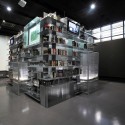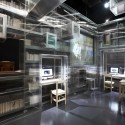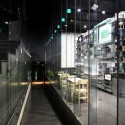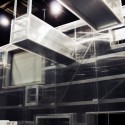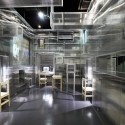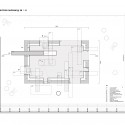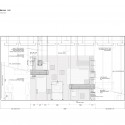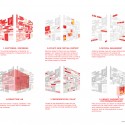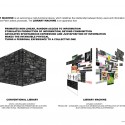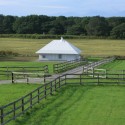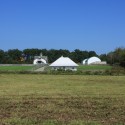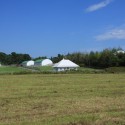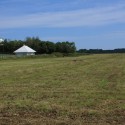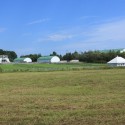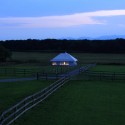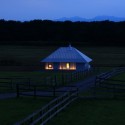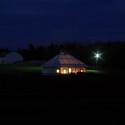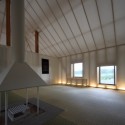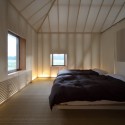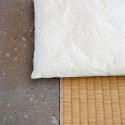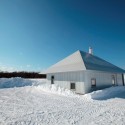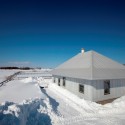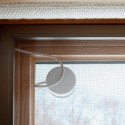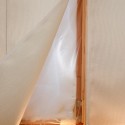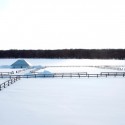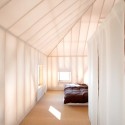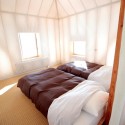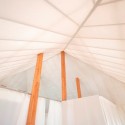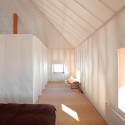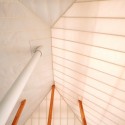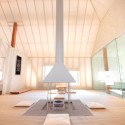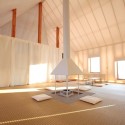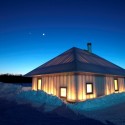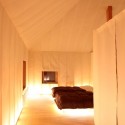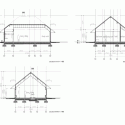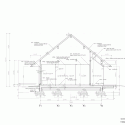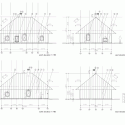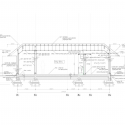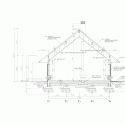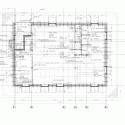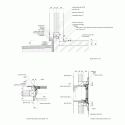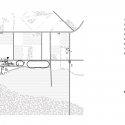Wednesday, January 30. 2013
Mini(Print)-me out of my own garbage?
Note: I'm joining here two posts that hit the blogs recently. The FilaBot 3d printer that print from garbage and the sort of narcissic-souvenir 3d photo booth from Omote 3d. Will it become possible to 3d print snapshots of ouselves, our houses, even our food with our own garbage (including therefore food garbage...)? Which would be a decent way to recycle trash (best way actually might be distant heating).
-----

Of the many fictionalized, futuristic innovations shown in the Back to the Future movies, one of the most beneficial belonged to the DeLorean at the center of it all, and I don’t mean the ability to time travel. Rather, if even regular engines could run on garbage, we’d solve the issues of fuel availability and waste disposal in one fell swoop. That’s why it’s nice to see that this concept has come into existence right at the upswing of the 3D printing phenomenon.
FilaBot is a desktop device that breaks down various types of plastics and processes them into filament that you can use for your home 3D printer. That includes your botched 3D printed experiments, so you won’t be wasting filament when you’re testing out a design.
Their Kickstarter campaign, which closed in early 2012, clocked three times its goal, and should prove to be a great accompanying device for home 3D printers like MakerBot. Founder Tyler McNaney plans to create a whole range of products that offer this functionality, some with great potential for customization.
FilaBot is a welcome arrival to a burgeoning world of creativity that threatens to create an immense amount of waste, something that we’re already pretty good at rapidly creating in large volumes. Now, instead of adding to the garbage pile, we can process some of our existing waste into something useful… well, depending what you’ll be designing and fabricating.
[via The Guardian]
----------
Un photomaton d’un nouveau genre vient de voir le jour à Tokyo: il crée une figurine à l'image du modèle. Complètement mégalo mais idéal pour les amateurs de petits soldats de plomb.
A priori ce n’est qu’un gadget de plus pour consommateurs en mal d’ego trip. Mais les figurines créées par Omote 3D, photomaton installé pour quelques semaines à Omotesando, coeur de la consommation de luxe tokyoïte, prouvent que l’impression 3D est en passe de devenir un produit grand public.
Le Pop up studio ouvrira dans une galerie de Tokyo le 24 novembre prochain. On pourra s'y faire tirer le portrait, à la façon d’un photomaton - mais avec l'aide d'un photographe professionnel. Le portrait sera ensuite scanné et à partir des données enregistrées, et une figurine à l'image du client verra le jour. La machine, appelée Omote 3D, propose donc de transformer le chaland en petit soldat de plomb – mais en plastique et sans fusil. Pour 200 euros (la figurine de dix centimètres), le laboratoire Party, Rhizomatiks et Engine Film livrent l’objet, qu'il s’agit ensuite de colorer soi-même.
Les prix sont encore assez élevés mais la technique en est à ses prémices : de 21 000 yens (200 euros) pour une figurine de 10 cm à 42 000 yens (400 euros) pour la plus grande version de 20 centimètres.
En juin dernier, durant les Designer's day, les Français de Sismo proposaient déjà aux visiteurs de modeliser leurs visages et les faisaient surgir de pièce de monnaie. Le studio Sismo édite également des reproductions de crânes, vanités des temps futures, contre quelques milliers d'euros.
Related Links:
Personal comment:
An interesting twist with 3d printing: to use it as a way to recycle our old PET bottles or plastic trash (and by extension any trash, including organic waste to 3d print food?). And a way to potentially produce strange self consumption portrait.
Tuesday, January 29. 2013
Nam June Paik Library / N H D M
Via ArchDaily
-----
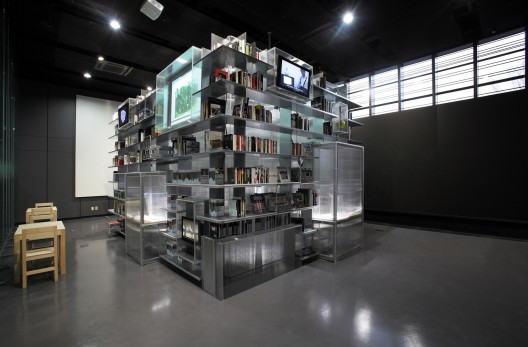
Designed by N H D M / Nahyun Hwang + David Eugin Moon, the Nam June Paik Library is a new public art library in Nam June Paik Art Center in Yong-In, Korea, which opened to the general public in 2011. Inspired by Nam June Paik’s artistic processes, the library was designed as a multi-functional spatial device, which redefines the relationship between library users and information. While the conventional library is characterized by the one directional transmission of the static, centralized, and predefined content, this library aims to promote non-linear and random access to information, and its production beyond the consumption. More images and architects’ description after the break.

The goal of the Nam June Paik Library is to collect, preserve, and provide access to historical and contemporary material related to the history and activities of Nam June Paik and his art. It offers to scholars a space for professional research, and to the local community an open forum for cultural engagement. The library houses and circulates the Center’s Nam June Paik Archives Collection, Nam June Paik Video Archives, and a rare Fluxus Footages Collection, as well as the user generated materials. The design and construction of the library was made possible by City of YongIn and Gyeoggi Province Government’s Small Library Fund.
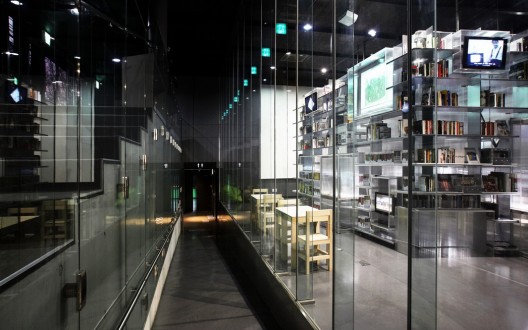
Through spontaneous expression and juxtaposition of ideas, the consumer of information becomes the producer, and the static contents of the library turns dynamic. The collective generation and appreciation of information makes the library experience multi-directional and reciprocal.

The Library Machine located in the center of the library deploys the following 6 architectural and programmatic devices.
1. Scattering – The juxtaposition of the dispersed information produces complexity that contrasts the simple geometric initial form.
2. Non-Textual Content / Off-Site – Objects related to Paik’s work are scattered, plugged, and mapped throughout the surface of the machine. Reprogrammable dynamic media can communicate Paik’s previous works, as well as information on artistic and other happenings from the off-site locations of interest.
3. Physical Engagement – Additional storage areas and unique shelving in the long drawers are incorporated to help the future expansion of the collection, while inducing curiosity, interactivity, and playful engagement.
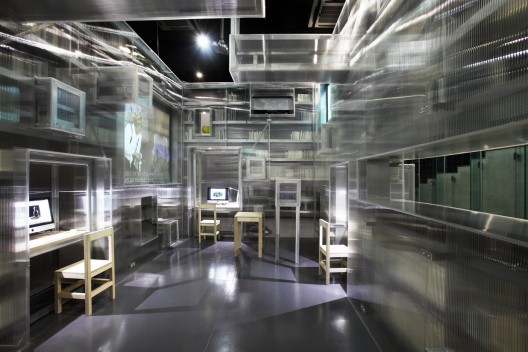
4. Production Lab – Inside the machine is reading, installation, video laboratories, and a space also for debates and group workshops.
5. “Representation Cells” – Content is also generated by users who can contribute to the information exchange. Small spaces or vitrines are made available for public display.
6. Library “Machinettes,” The Propagation Aides – Parts of the machine can detach as independent modules and can freely travel to other rooms or even outdoors to perform communicative functions, such as video projections or sound performances.
Architects: N H D M / Nahyun Hwang + David Eugin Moon
Location: 85 Sanggal-dong, Giheung-gu, Yongin-si, GyeongGi-do, South Korea
Client: Nam June Paik Art Center
Program: Art/Media Library
Status: Opened 2011
Related Links:
Thursday, January 24. 2013
Même – Experimental House / Kengo Kuma & Associates
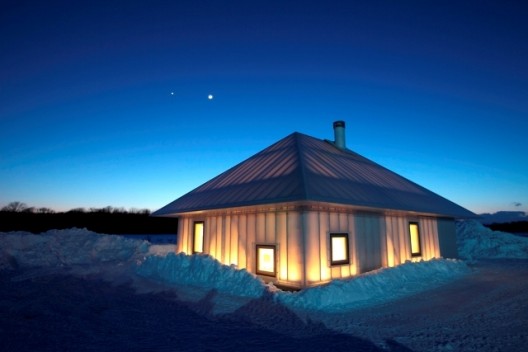
Architects: Kengo Kuma & Associates
Location: Hokkaido Prefecture, Hiroo District, Taiki, Memu, Japan
Project Architect: Kengo Kuma, Takumi Saikawa
Client: LXIL JS Foundation
Structural Engineering: Yashushi Moribe (Showa Womden’s University)
Area: 79,5 sqm
Year: 2011
Photographs: Courtesy of Kengo Kuma & Associates
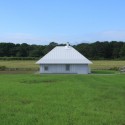
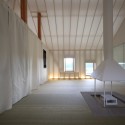

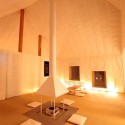

We were in charge of the first experimental house, and in the process of designing, we got a number of clues from “Chise,” the traditional housing style of the Ainu. What is most characteristic about Chise is that it is a “house of grass” and “house of the earth.” While in Honshu (the main island) a private house is principally a “house in wood” or “house of earthen wall,” Chise is distinctively a “house of grass,” as the roof and the wall are entirely covered with sedge or bamboo grass so that it can secure heat-insulating properties. Also, in Honshu the floor is raised for ventilation to keep away humidity, whereas in Chise they spread cattail mat directly on the ground, make a fireplace in the center, and never let the fire go out throughout the year. The fundamental idea of Chise, “house of the earth,” is to keep warming up the ground this way and retrieve the radiation heat generated from it.

Here is how section of the house is structured: We wrapped a wooden frame made of Japanese larch with a membrane material of polyester fluorocarbon coating. Inner part is covered with removable glass-fiber-cloth membrane. Between the two membranes, a polyester insulator recycled from PET bottles is inserted that penetrates the light. This composition is based on the idea that by convecting the air in-between, the internal environment could be kept comfortable because of the circulation.

We do not treat insulation within the thickness of heat-insulation material only, which was a typical attitude of the static environmental engineering in 20th century. What we aim at is a dynamic environmental engineering to replace it for this age. That we utilize the radiant heat from the floor is part of it, and it has been verified that you could spend several days in winter here without using floor heating. The other reason we covered the house with membrane material was our longing for a life surrounded by natural light, as if you were wrapped in daylight on the grassland. Without relying on any lighting system, you simply get up when it gets light, and sleep after dark – we expect this membrane house enables you to lead a life that synchronizes the rhythm of the nature.
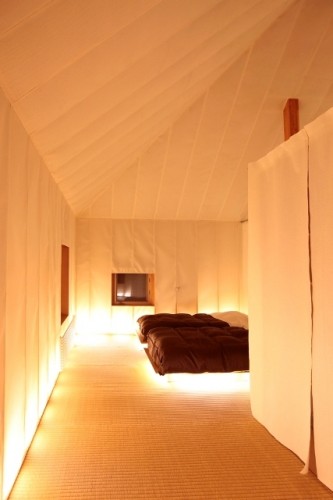
In one part of the house, a wooden insulated window sash is installed external to the membrane. It is a new device to monitor the living environment of the house by changing various types of sashes. Likewise, all glass fiber cloth in the interior can be removed so that we can continue many kinds of environmental experiment.
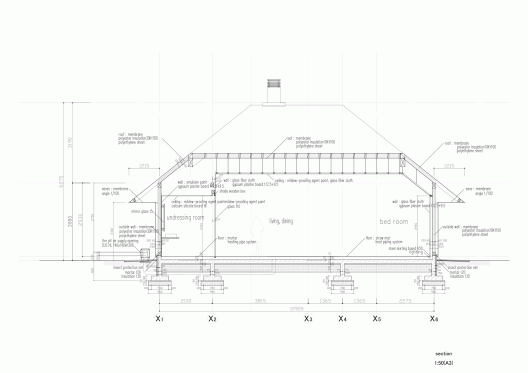
Related Links:
Personal comment:
Very interested in the experimental materiality of this house, its semi-transparent roof, isolation and coating. Makes me think of the "ghost appartements" made out of nylon by the korean artist Do-ho Suh, only this one is inhabitable.
Why DNA Will Someday Replace the Hard Drive
-----
Researchers who have used the biomolecule to encode MP3s, text files, and JPEGs say it will be a competitive storage medium in just a few decades.
DNA could someday store more than just the blueprints for life—it could also house vast collections of documents, music, or video in an impossibly compact format that lasts for thousands of years.
Researchers at the European Bioinformatics Institute in Hinxton, U.K., have demonstrated a new method for reliably encoding several common computer file formats this way. As the price of sequencing and synthesizing DNA continues to drop, the researchers estimate, this biological storage medium will be competitive within the next few decades.
The information storage density of DNA is at least a thousand times greater than that of existing media, but until recently the cost of DNA synthesis was too high for the technology to be anything more than a curiosity. Conventional methods of storing digital information for prolonged periods continue to pose problems, however. The magnetic tapes typically used for archival storage become brittle and lose their coating after a few decades. And even if the physical medium used to store information remains intact, storage formats are always changing. This means the data has to be transferred to a new format or it may become unreadable.
DNA, in contrast, remains stable over time—and it’s one format that’s always likely to be useful. “We want to separate the storage medium from the machine that will read it,” says project leader Nick Goldman. “We will always have technologies for reading DNA.” Goldman notes that intact DNA fragments tens of thousands of years old have been found and that DNA is stable for even longer if it’s refrigerated or frozen.
The U.K. researchers encoded DNA with an MP3 of Martin Luther King Jr.’s “I Have a Dream” speech, a PDF of a scientific paper, an ASCII text file of Shakespeare’s sonnets, and a JPEG color photograph. The storage density of the DNA files is about 2.2 petabytes per gram.
Others have demonstrated DNA data storage before. This summer, for example, researchers led by Harvard University genetics professor George Church used the technology to encode a book (see “An Entire Book Stored in DNA”).
The difference with the new work, says Goldman, is that the researchers focused on a practical, error-tolerant design. To make the DNA files, the researchers created software that converted the 1s and 0s of the digital realm into the genetic alphabet of DNA bases, labeled A, T, G, and C. The program ensures that there are no repeated bases such as “AA” or “GG,” which lead to higher error rates when synthesizing and sequencing DNA.
The files were divided into segments, each bookended with an index code that contains information about which file it belongs to and where it belongs within that file—analogous to the title and page number on pages of a book.
The encoding software also ensures some redundancy. Each part of a file is represented in four different fragments, so even if several degrade, it should still be possible to reconstruct the data.
Working with Agilent Technologies of Santa Clara, California, the researchers synthesized the fragments of DNA and then demonstrated that they could sequence them and accurately reconstruct the files. This work is described today in the journal Nature.
Goldman’s group estimates that encoding data in DNA currently costs $12,400 per megabyte, plus $220 per megabyte to read that data back. If the price of DNA synthesis comes down by two orders of magnitude, as it is expected to do in the next decade, says Goldman, DNA data storage will soon cost less than archiving data on magnetic tapes.
Victor Zhirnov, program director for memory technologies at the Semiconductor Research Corporation in Durham, North Carolina, says that because the current cost is so high, data-storing DNA will probably find its earliest use in long-term archives that aren’t accessed frequently. Looking ahead, he says, he can envision “a more aggressive technology” to replace flash, the nonvolatile memory technology found in portable electronics, which is already reaching its scaling limits. The key will be developing entire hardware systems that work with DNA, not just sequencers and synthesizers.
Harvard’s Church says he is working on this very problem. “We can keep incrementally improving our ability to read and write DNA, but I want to jump completely out of that box,” he says. Church is currently developing a system for directly encoding analog signals such as video and audio into DNA, eliminating conventional electronics altogether.
Wednesday, January 23. 2013
Test Room

Amongst many other interesting moments in Siobhan Roberts's new biography of Alan Davenport, the "father of modern wind engineering," is the incredible story of a room in Eugene, Oregon.
In August 1965, Roberts explains, "ads in the local newspaper... promised complimentary checkups at the new Oregon Research Institute Vision Research Center." But these promised eye exams were not all that they seemed.
The office was, in fact, a model—a disguised simulation—including a "stereotypical waiting room" where respondents to the ad would be "greeted by a receptionist" who could escort them into a fake "examination room" that turned out to be examining something else entirely.
While members of the public were led through a series of eye tests, looking at "some triangles," in Roberts words, that had been projected onto the wall, they were, in fact, being jostled back and forth, silently and unannounced, by motors installed on tracks below the floor. The room swayed, rocking side to side, shifting imperceptibly—or so the experiment was testing—beneath the feet of the volunteers and the actor-nurses who, without breaking character, took care of them.
It turns out that the whole thing was actually a wind-condition simulator for a pair of buildings that had not yet been publicly announced, let alone constructed: the future twin towers of New York City's World Trade Center. This quiet office in Oregon, paid for by the Port Authority, was an unpublicized test-run for the high winds and other complicated atmospheric effects that would soon rock the two towers back and forth at their unprecedented height in southern Manhattan.
The room, "mounted on a wheeled platform driven by hydraulic actuators," thus tested unsuspecting members of the public for their physiological reaction to the swaying of the floor—testing whether "conflicting brain inputs" from the moving architecture "would cause synaptic confusion, or motion sickness—nausea, dizziness, fatigue," as Roberts writes.
Unbeknownst to them, then, people in Eugene, Oregon, in 1965, were helping to test the aerodynamic flexibility of two buildings that had not yet been announced and that would soon come to dominate the skyline of New York City—leaving at least me to wonder if some room today somewhere, some doctor's office or other nondescript chamber, whether a classroom or a restaurant, is actually a testing ground for as-yet unrealized architectures to come, be it in New York City, Dubai, Mexico City, or, who knows, even for future travelers to the moon.
(Thanks to Nicola Twilley for giving me a copy of Roberts's book).
Personal comment:
Make me think a little bit of both the mystery spot and this other previous article about Julian Hoeber exhibition,Demon Hill.
fabric | rblg
This blog is the survey website of fabric | ch - studio for architecture, interaction and research.
We curate and reblog articles, researches, writings, exhibitions and projects that we notice and find interesting during our everyday practice and readings.
Most articles concern the intertwined fields of architecture, territory, art, interaction design, thinking and science. From time to time, we also publish documentation about our own work and research, immersed among these related resources and inspirations.
This website is used by fabric | ch as archive, references and resources. It is shared with all those interested in the same topics as we are, in the hope that they will also find valuable references and content in it.

